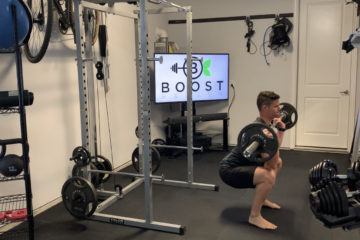
Anyone who has switched to a plant-based diet has heard the normal set of questions and remarks from friends, family, and co-workers:
“How do you get enough protein?”
“What about fish?”
“What about eggs?”
“What about dairy?”
“How do you get enough calcium?”
“I don’t think I could live without my _____.”
“I am just not sure if this type of eating is really for me.”
“I exercise a ton and feel like I would need more calories than I could get from just plants. “
These are not bad questions and comments. They were things that I thought about before I started on this journey myself over 5 years ago. You can’t help but have these feelings and concerns when you have eaten completely different for your entire life. It is totally normal to wonder if you will be able to perform at the same level with such a major shift in diet.
Since I am often asked how I get enough nutrients to keep and put on muscle while training aggressively in both cardio and strength disciplines, I decided to finally go ahead and break it down for a day. I am not suggesting this is the holy grail of nutrient breakdowns, in fact I even highlight a few opportunity micronutrients for myself. Instead, my goal is to show that plenty of nutrients can be acquired through plant-based nutrition, even for athletes.
I am not a calorie counter or macronutrient obsessor, but I do have a few simple self-induced nutrition rules that I follow:
- I fast every night for at least 12 hours
- I fast once per week for 24 hours
- I only eat plant-based whole foods
- I eat when I am hungry if it has been more than 2 hours since I ate last and I am not fasting
- I make sure to eat fruit, vegetables, healthy fat, protein, and carbs with each meal
- I supplement daily with B-12, a multi-vitamin, 5 grams of master pattern aminos, and 5 grams of creatine
First let’s take a look at dietary reference intakes to establish a goal. This Dietary Reference Intake Calculator (DRI) is on the USDA website and was created by the Health and Medicine Division of the National Academies of Sciences, Engineering and Medicine. It appears to be a purely scientific tool to help healthcare professionals recommend general nutrition guidelines based on age, gender, height, weight, and activity level. It doesn’t seem to be tainted with any obvious influence from big agriculture like other tools. For example the Choose My Plate tool still has “dairy” as it’s own category along with fruits, vegetables, grains, and protein. What is dairy doing there? I think we all know. Anyway the DRI seems free of this kind of influence so I decided to use it for reference with my plant-based diet to see how I was doing. So I put in my inputs into the DRI calculator:
Gender – Male
Age – 40
Height – 6 feet and 0 inches
Weight – 174 pounds
Activity Level – Very active (highest level)
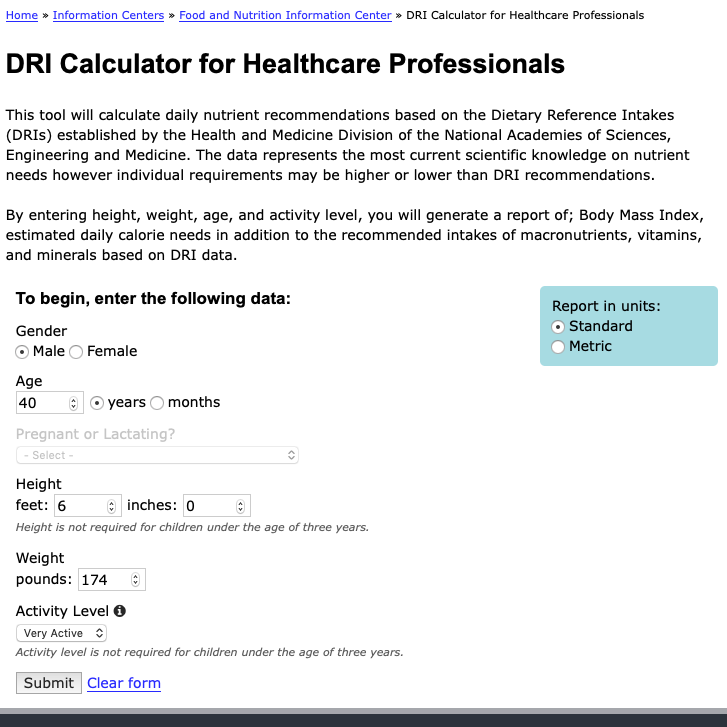
For my listeners and readers outside of the US, don’t worry it has the option to do the calculator in metric system units as well. After putting in your details it generates a nice little report of your needs for calories, macronutrients, and micronutrients (vitamins and minerals). Mine came back with macronutrient requirements of 3,605 calories, 406-586 grams of carbohydrates, 63 grams of protein, and 80-140 grams of fat. So the question you may be wondering is could I hit those requirements on a plant-based diet?
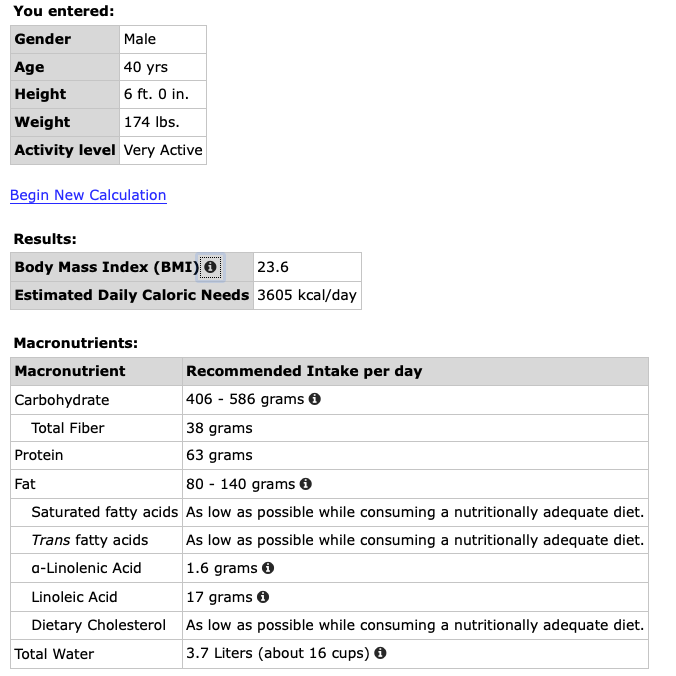
Let’s dig in to that. Below is a typical day for me. Each of the 4 meals in the summary below are identical which happens on some days (I know that may seem a little crazy to some of you). Most days meal 4 will be something from the cookbook Everyday Kitchen by Vegan Richa. One example is her “Firecracker Chickpea Salad with Peanut Dressing” that is nutrient dense serving up 22 grams of protein and puts a little spice in your life. All of the recipes are outstanding and most are balanced well nutritionally. For simplicity’s sake, I decided to used the same meal for all 4.
I usually eat my first meal at around 8:30am now. I used to wait until a little later but don’t feel the need to wait the extra hour or two since I do a big 24 hour fast each week now. I just make my goal 12 hours or more daily of fasting overnight. I still eat the same number of meals (4) and the same foods, but the daily feeding window just starts and finishes a bit earlier. The main part of this meal (everything except the apple and peanut butter) is my Vegetable Curry. I love it so much, I have been eating it for years almost daily. You can see when you look at the totals of the meal it has a healthy dose of nutrients. The fat at 27 grams, may be alarming at first, but it is mostly non saturated fat. It also has 759 calories, 106 carbs, and 27 grams of protein. It is very satiating. When you run the numbers over those 4 meals you get a sum of 3,471 calories, 114 grams of fat, 110 grams of protein, and 430 carbs.
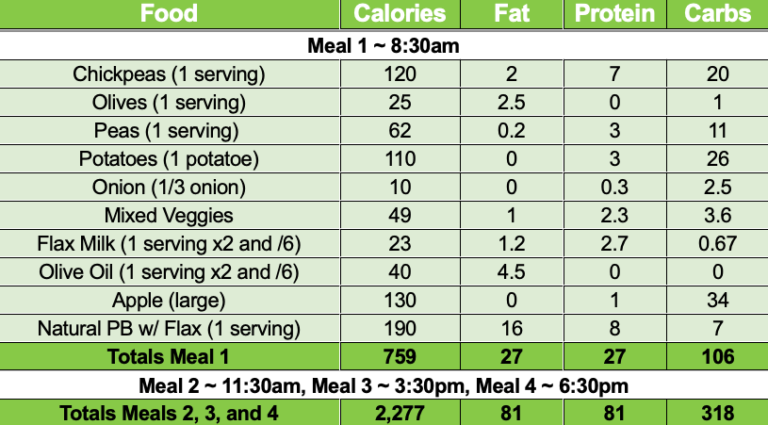
I would be lying if I said I didn’t have a dessert. Even though I don’t have this every night, we should go ahead and include it here. My post dinner enjoyment includes a bit of dark chocolate (about 1/3 of a serving size) and 2 glasses of red wine. This little treat adds 435 calories, 6 grams of fat, 1 gram of protein, and 6 carbs. So if you add all 4 meals plus the dessert together you can see I am very close to the DRI calculator that I discussed earlier. My overall daily calories landed at 3,471 while the DRI recommended 3,605, my fat total was 114 grams with DRI range from 80-140 grams, my protein total was 110 grams versus DRI recommendation of 63 grams, and my carbohydrate total was 430 grams with DRI range from 406-586 grams. I was pleased to see how in line my diet is with the DRI, especially since it is entirely by happenstance. As I mentioned previously, I was just focusing on eating whole food plant-based, and getting healthy fat and protein with each meal.

Some folks get a little obsessed with macronutrient percentages. I included them here out of curiosity. My intake of 430 grams of carbs at 54% of total calories is probably enough to make a ketosis dieter blush. I personally think it is a little silly to completely focus on, or remove an entire macro like carbs. Yes, let’s limit our refined sugar intake, but we need carbs in the form of fruits and vegetables with the natural occurring fiber. While there will always likely be fad diets that focus on a particular macronutrient, it seems folks are starting to become aware that this may not be the best strategy. A 2018 study in JAMA showed that macronutrient ratio differences do not make a difference in weight loss (i.e. low carb, low fat, etc.). The study was 1 year long and had over 600 participants.
So what about micronutrients? I think I may have a few opportunity areas in getting enough micronutrients, but this just requires a bit of planning to overcome. A 2018 study in Nutrients found that “A completely plant-based diet is suitable during pregnancy, lactation, infancy, and childhood, provided that it is well-planned.” I like this example because the one body that is likely working harder than a daily exerciser like me, is a pregnant or breastfeeding mother. The researchers noted that it is important to keep an eye on protein, fiber, omega-3 fatty acids, iron, zinc, iodine, calcium, vitamin D, and vitamin B12. I honestly hadn’t looked into my intake on some of these until writing this article.
I found a nice online resource for nutrient content in vegan foods called The Vegetarian Resource Group (VRG). It gives you a nice list of plant-based foods for each nutrient and the amount of the nutrient in each. For example if you look at calcium on the VRG website you will see that a cup of kale has 177mg of calcium. Looking below at my requirements in the DRI calculator you can see my recommended intake of calcium is 1000 mg. That is a lot of kale! Luckily I also get some in the fortified plant milk and in my multi-vitamin, but I wanted to get more from a whole food source. In looking at the list on the VRG website I saw blackstrap molasses sitting prominently at the top of the list of calcium rich vegan foods at 400 mg per serving! Another opportunity nutrient for me, based on the foods I eat, appears to be iron. I get some in lentils, chickpeas, and spinach but wanted to get in a bit more. I checked out iron on the VRG website and what is sitting on top of the list as the best plant-based source of iron? Good ole blackstrap molasses again with a whopping 7.2 mg per serving! This is most of the way to my daily 8 mg iron goal. I will be eating this super food daily going forward!
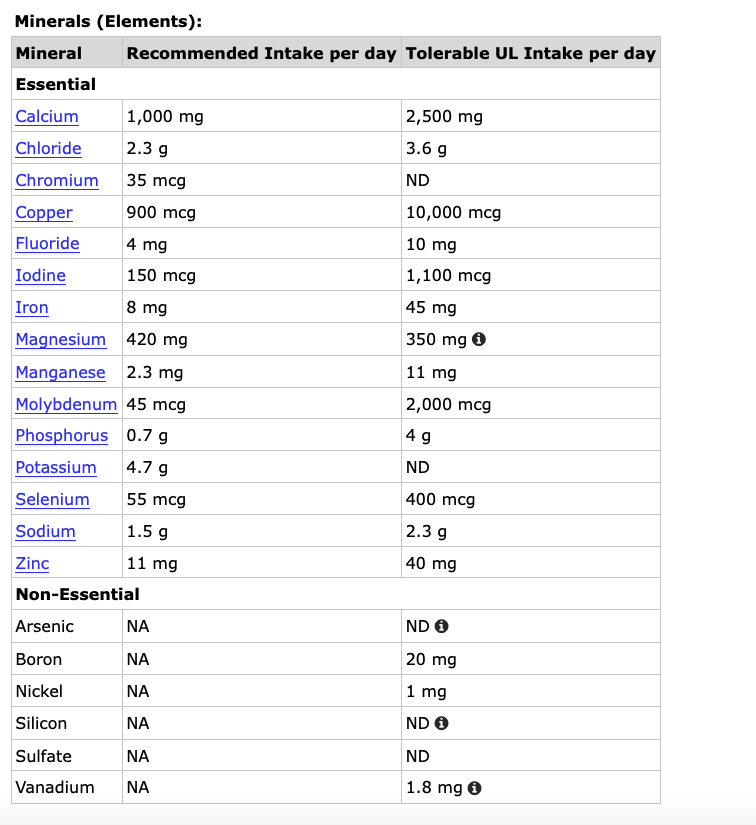
I have heard some folks argue that if plant-based is so great then why do you have to supplement? The truth is that a plant-based diet gets you far closer to overall nutrient needs than a standard omnivore diet. A 2014 study in Nutrients compared the nutritional quality of vegan, vegetarian, semi-vegetarian, pesco-vegetarian, and omnivorous diets. The researchers used the Healthy Eating Index scoring system to value each of the participants’ diets and found that the vegan diet scored the best while the omnivorous diet scored the worst. Furthermore the researchers found that the vegan diet had the lowest total calories, better fat intake profile, and highest dietary fiber. This was in contrast to the omnivorous diet which was the opposite in each of these categories. One hit against the vegan diet was low levels of calcium. I already addressed how I will be personally attacking this going forward with blackstrap molasses.
So there you have it, a plant-based diet has all the nutrients you need. Yes you should eat mostly whole foods, yes it is going to require some effort and planning, and yes you will need to supplement B12. That said, it is most likely going to have a lot less holes nutritionally than a standard omnivorous diet. I talk more about how I lost 10% body fat, gained strength, and improved sport performance after switching to plant-based in this article. You really can thrive on plants!
Please click the link below to your favourite podcast app to listen in or watch the show on BOOST Health TV
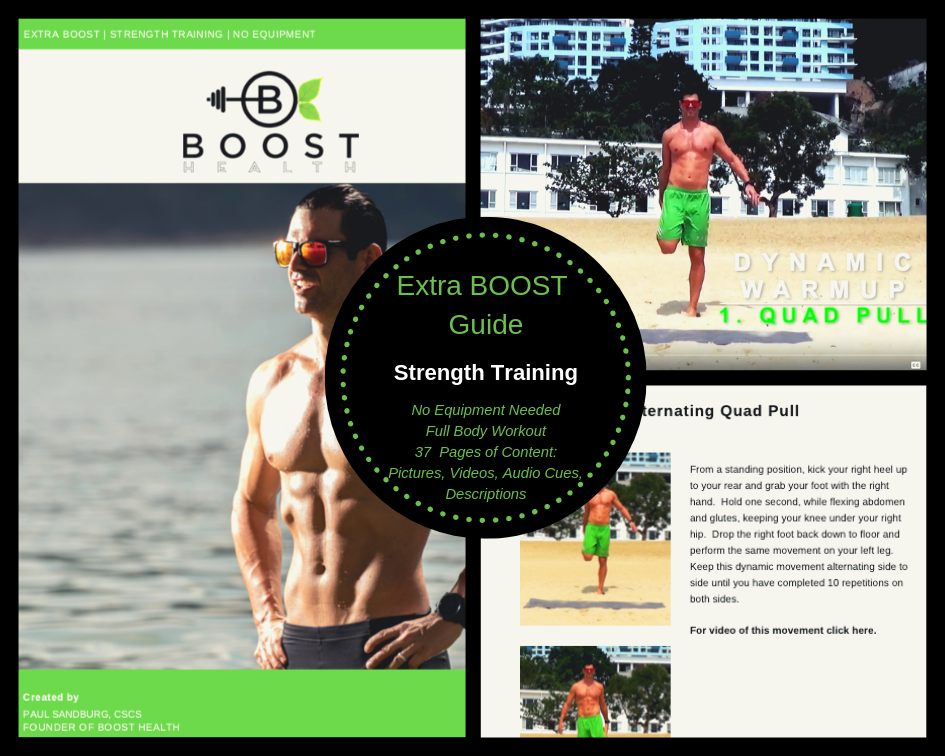
Extra BOOST Guide | Strength Training | No Equipment
37 pages of pictures, videos, audio cues, and descriptions. Includes dynamic warm up, full body workout, and cool down.
Podcast: Play in new window | Download
Subscribe Apple Podcasts | Google Podcasts | RSS






